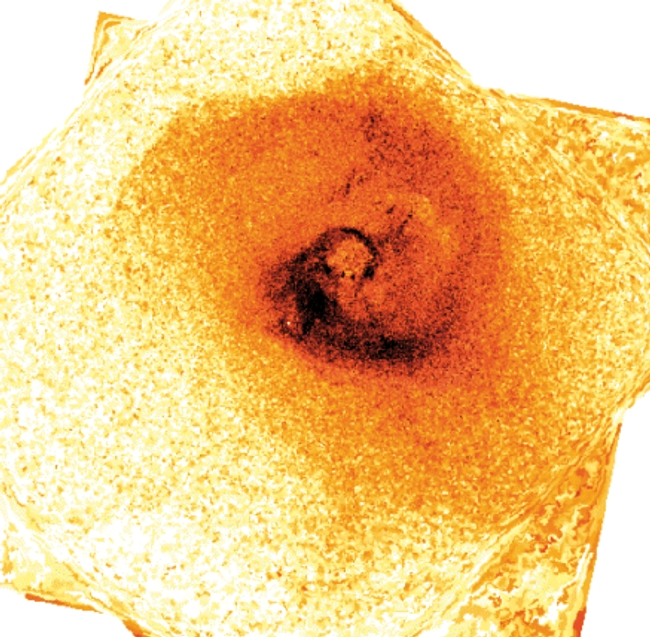
 Credit: A. C. Fabian, et al., 2006,
Monthly Notices of the Royal Astronomical Society, Volume 366, pp 417-428.
Credit: A. C. Fabian, et al., 2006,
Monthly Notices of the Royal Astronomical Society, Volume 366, pp 417-428.
Taking Perseus' Temperature
In the right light, the Perseus cluster of galaxies sure looks weird, downright scary. As well it should - it's got a monster lurking at its center. Not a snake-haired Gorgon nor a sea monster - the Perseus cluster hides a supermassive black hole that belches out bursts of energy, generating gigantic ripples in spacetime, and whimsically blowing bubbles. Brave astronomers have been attending to this monster, taking X-rays and now, as shown above, the monster's temperature (and that of its surroundings). The image above is the map of the temperature variation around the Perseus cluster derived from an X-ray observation by the Chandra X-ray Observatory of about 70 million X-rays emitted from this beast. Dark colors are "cold" (a few million degrees) while the highest temperature regions (a few hundred million degrees) are shown in yellow-white. The mass in the "cold" gas is huge - about 1 billion solar masses. This observation and others like it are helping astronomers understand how energy can be deposited into such clusters of galaxies.
<
HEA Dictionary ● Archive
● Search HEAPOW
● Other Languages
● HEAPOW on Facebook
● Download all Images
● Education ● HEAD
>
Each week the HEASARC
brings you new, exciting and beautiful images from X-ray and Gamma ray
astronomy. Check back each week and be sure to check out the HEAPOW archive!
Page Author: Dr. Michael F. Corcoran
Last modified Monday, 26-Feb-2024 17:36:03 EST


